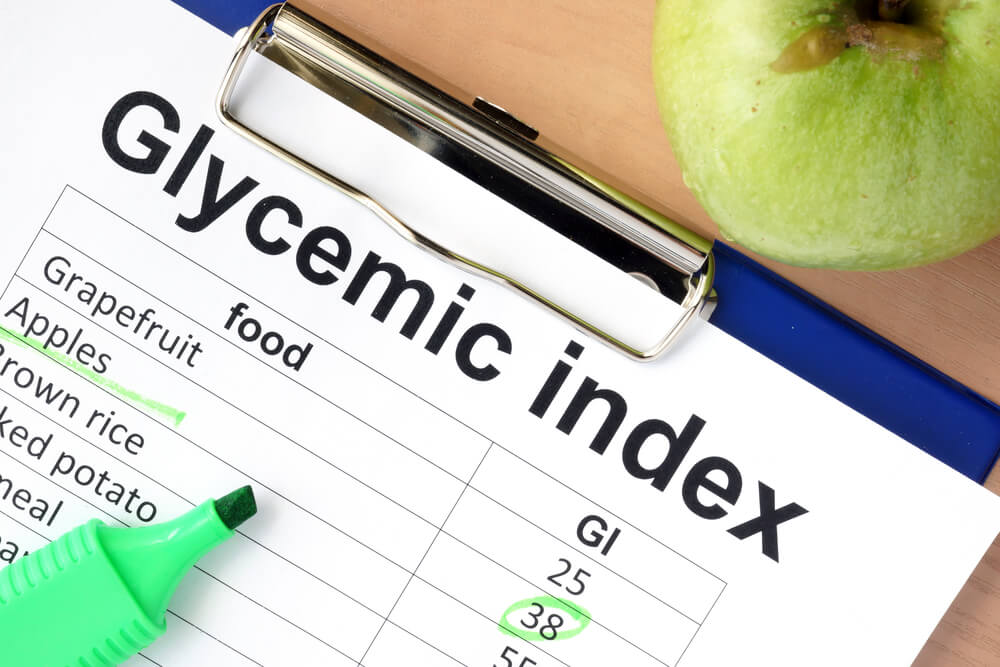Get Informed: Learning about the glycemic index and diabetes control can help you lead a stable and happy lifestyle.
Living with diabetes implies making changes in mostly every aspect of your lifestyle, but especially around what you eat and when you eat it. For this reason, many people rely on the glycemic index and diabetes control diets to make sure they stay healthy and without major worries.
The glycemic index (GI) is a classification method of sorts, that serves to measure how a carbohydrate-containing food raises blood glucose in your system, and foods are ranked based on how they compare to a reference food.
The GI system also has classifications for low glycemic foods for diabetics, and high glycemic index foods. These two major groups provide a clearer view on how glycemic index and diabetes control works.
As we already know, not all cabs work the same in the human body. And because of their classification (starch, fiber and sugar) we can estimate which ones could trigger a quicker and higher spike in blood sugar levels, while others do a better job at providing filling nutrients that won’t cause major changes.
To better understand the two major groups mentioned above – the low glycemic foods for diabetics and the high glycemic index foods – the GI system uses a number scale that goes from 0 to 100, giving pure glucose the highest GI or number 100.
The glycemic index provides a “rule of thumb” to identify which are slower-acting “good carbs” and which are faster-acting or “bad carbs”.
Basically, low glycemic foods for diabetics would rate anywhere between 0 to 55 on the GI scale. Medium food are considered to be on the 56 to 69 range. High glycemic index foods however, are considered the bad ones, with a range that goes from 70 to 100.
So, if you are wondering how to identify these foods, most FDA approved products and all diabetic-friendly products come with a glycemic index chart on its label.
We have also rounded up examples of these major food groups with their scale number, to give you a good idea of what to get on your next supermarket route, and what to avoid at all costs:
Low Glycemic Foods for Diabetics (0 to 55):
- Apples
- Oranges
- Red Grapefruit
- Berries
- Carrtos
- Non-Starchy Vegetables
- Leafy Greens
- Quinoa
- Barley
- Legumes
- Beans
- Nuts
- High-fiber Bran cereal
- Steel-cut or Rolled Oatmeal
Medium Glycemic Foods (56 to 69):
- Brown Rice
- Wild Rice
- Raisins
- Couscous
- Whole Wheat Pasta
- Rye Bread
- Ripe Bananas
- Grapes
High Glycemic Index Foods (70 to 100):
- White Rice
- White Bread
- Bagels
- Processed Cereals
- Cereal Bars
- Baked Goods
- Cakes
- Potatoes
- Maple Syrup
- High Fructose Syrup
- Candies
- Dried or Candied Fruit
- Watermelon
Certain factors to take into consideration when using the glycemic index and diabetes control as your guide, is that you need to think about the way you will combine these foods to create your final meal.
Portion control is of outmost importance, just like it is knowing how long you would have to cook it for (the longer it’s cooked, the higher it tends to be on the GI scale), their fiber content, the state of the vegetable or fruit (ripeness level), etc. as it all affects the final number on your plate.
As a quick rule, keep in mind that processed foods have a higher GI number than plain, wholesome ones. Some high GI foods have much more nutrients, so you can balance those with low GI ones.
At the end of the day, paying extra care to what you buy on your shopping spree and how you prepare your meals, will make all the difference if you decide to use the GI system to keep control of your diabetes.
Sources:
https://www.healthline.com/health/type-2-diabetes/fruits-vegetables
https://www.mayoclinic.org/diseases-conditions/diabetes/expert-answers/diabetes/faq-20058466
